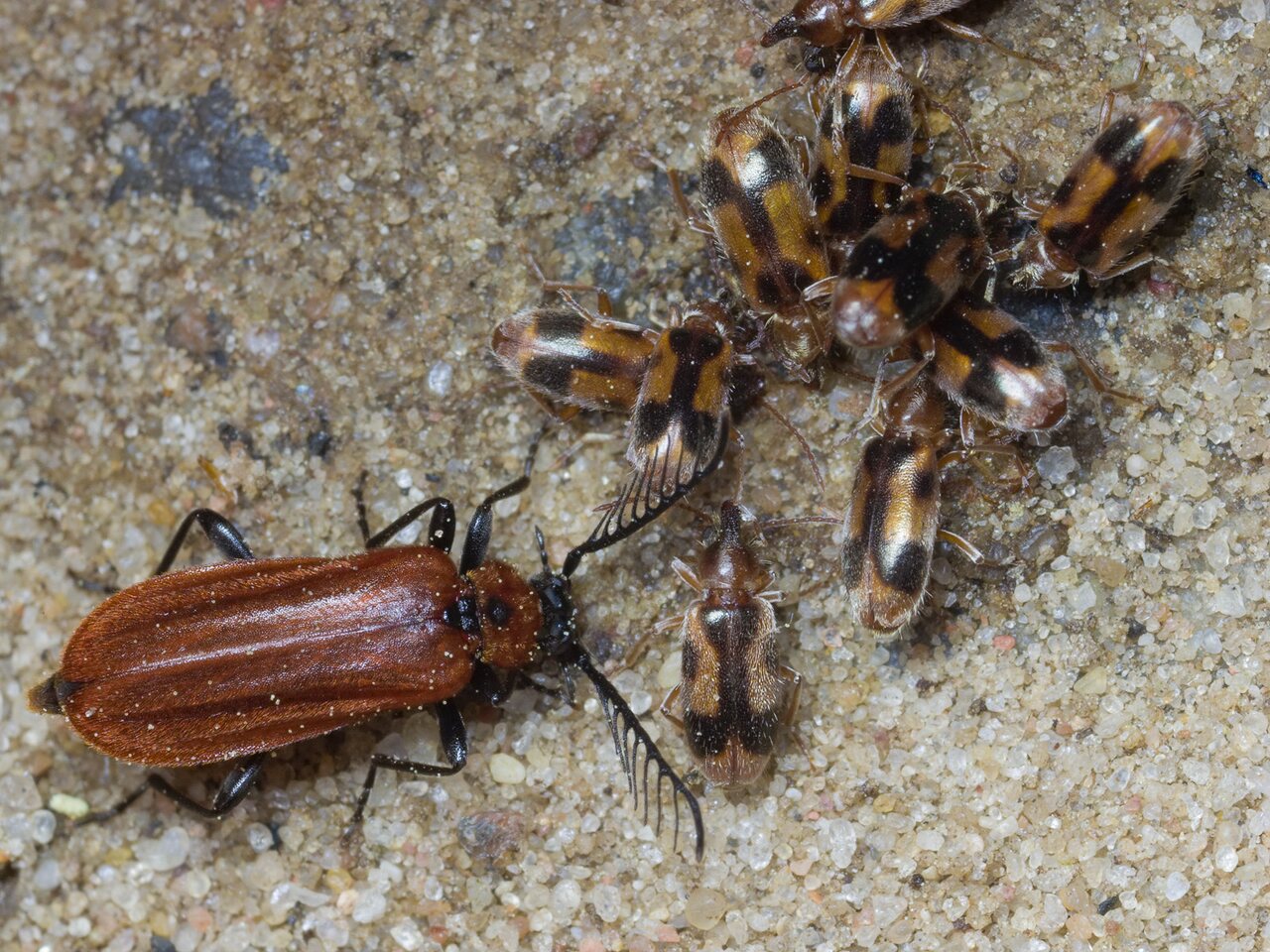
Notoxus monoceros · vienaragis mitriavabalis
- monoceros beetle
- Gemeine Einhornkäfer
- vienaragis mitriavabalis
- eenhoornige snoerhalskever, eenhoornkever
- gliczyca jednorożec
ukbeetles.co.uk/notoxus-monoceros They may occasionally be found in large numbers; once a few have been spotted on the surface it is usually easy to sieve many specimens from dry sand or among grass roots, they are saprophagous, feeding upon decaying vegetation etc. but may also be found on various flowers where they consume pollen. Larvae develop within sand or soil, usually near the surface and sometimes under stones or debris; they feed on decaying organic material and are fully-grown by the autumn but overwinter in the final instar and pupate within the soil in the spring. Adults obtain the defensive chemical cantharidin from Oil beetles (Meloe spp.) and some flower beetles (Oedemeridae) and will cling to them in order to consume their secretions; they probably detect their hosts by chemical means as dead meloids have been used by continental collectors to attract large numbers of adults.
‥
0 comments
Add a comment
Comments